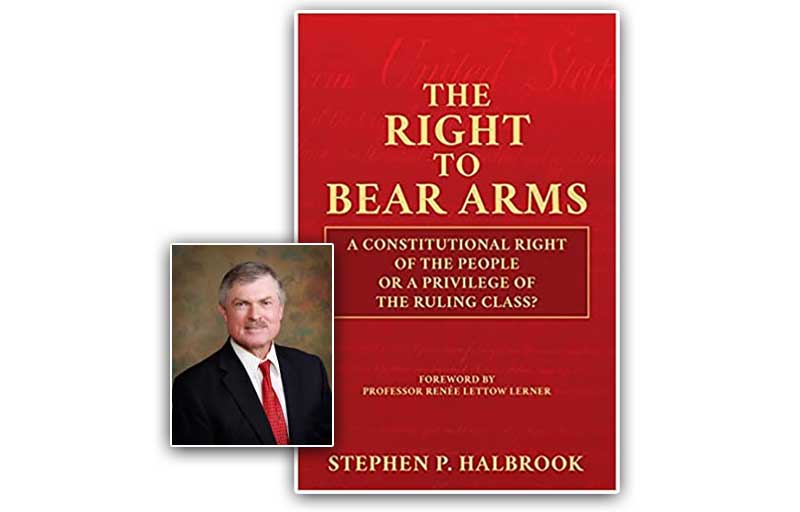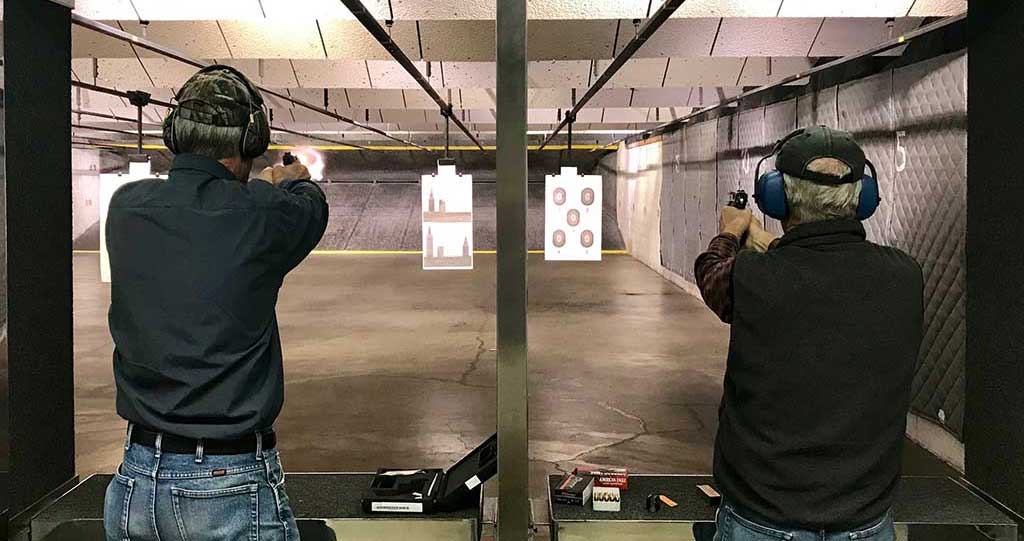[Ed: This review, edited for DRGO, comes from The Arbalest Quarrel, another version of which was earlier published June 4 at Ammoland. We think this is an extremely important study this year in history, as the Supreme Court makes plans to consider the Right to Bear Arms during its fall session.]
Many Americans know Stephen Halbrook as a foremost legal expert on the Nation’s Second Amendment. It is a designation richly deserved, and his latest book, The Right to Bear Arms, couldn’t come at a more opportune and pressing time as the American people find themselves at a crossroads.
Advertisement — Continue Reading Below
The central theme of Halbrook’s comprehensive, well-researched book is that the Second Amendment of the Bill of Rights of the U.S. Constitution is the linchpin of a free Constitutional republic and to the continued sovereignty of the people over Government. It is in this frame of heightened acuity to the imminent danger facing the Nation and its people that Halbrook’s book, The Right to Bear Arms, takes on added importance.
The peril facing our Country is captured in the subtitle of the book. Halbrook poses the question: “A Constitutional Right of the People or a Privilege of the Ruling Class?” The question is salient, not rhetorical.
By posing the subtitle as a question Halbrook tells Americans they have a crucial choice to make today, just as the framers of the Constitution had theirs to make well over two centuries ago when, after a hard-fought war for independence from tyranny, they found themselves faced with an arduous task: hammering out the form of the Federal Government. Perceiving it as a “necessary evil,” they did not want the thing to turn into a rapacious tyrannical beast such as the one they had just fought gallantly and ferociously to defeat.
Advertisement — Continue Reading Below
The framers of the Constitution realized that the protection of a free Republic and the sovereignty of the American people would require, at a minimum, a clear division of authority among three core functions of government: Legislative, Executive, and Judicial. They provided for this in the Articles of the Constitution. But they knew that this separation of powers would only impede the inexorable tendency of the Government to devolve into tyranny.
The ultimate “fail-safe” against a powerful, centralized Government usurping sovereignty from the American people would require incorporating a “Right to Bear Arms” in the U.S. Constitution’s Bill of Rights. The Antifederalists among the Constitution’s framers insisted on this even as the Federalists thought an explicit assertion of the Right to be unnecessary. Thankfully, the Antifederalists won the day.
Our explicit, emphatic Right of the People to Bear Arms was, at the time of the ratification of the Bill of Rights, unheard of in any other nation-state—and remains so to this day.
Advertisement — Continue Reading Below
As governments of other nations constrain personal autonomy and hence liberty, and often succumb to tyranny, it is important that Americans continue to recognize the timeless importance of the Right to Bear Arms, for preservation of that Right is inextricably tied to the fate of the United States.
Halbrook’s book is well-researched, thorough, and yet markedly readable. It serves as an effective, eloquent, rejoinder to those elements in the Nation that demonstrate a desire to serve the interests of a privileged elite. Such an idea was anathema to the founders, and they diligently sought to avoid its dire ramifications. Their answer: The Right to Bear Arms. And Halbrook makes clear to whom the inviolate Right to Bear Arms belongs.
“The Second Amendment refers to ‘the right of the people.’ And who are “the people?” The term ‘people,’ was defined as ‘persons’ in general . . . and the people was defined as ‘the commonalty,’ as distinct from men of rank. . . .”
Advertisement — Continue Reading Below
The Right to Bear Arms was never conceived by the framers of the Constitution as a thing accruing to the benefit of a privileged few.
Moreover, the framers of the U.S. Constitution understood the “Right to Bear Arms” to be a preexisting right of the commoner. The Second Amendment simply codifies this. Halbrook makes the point cogently:
“‘The right of the people’ is significant. The term ‘right’ expresses a preexisting right, not a new right invented for the Bill of Rights. To declare that ‘the right’ to do or be free of something shall not be abridged, infringed, or violated presupposes that the right already exits.”
Advertisement — Continue Reading Below
But what is one to make of the dependent “militia” clause? Halbrook addresses this question too, and from a logical standpoint. Halbrook states:
“If keeping and bearing arms was a ‘right’ only of the militia when in actual service, the Framers certainly would have so stated. It would have been odd when guaranteeing ‘the right of the people to keep and bear arms,’ had the Framers really meant ‘the right of the militia to keep and bear arms when authorized and activated by government.”
This explanation serves as a remonstration to remarks by retired Associate Supreme Court Justice John Paul Stevens. Stevens had first called for outright repeal of the Second Amendment, knowing well the plain meaning of it. Later, he suggested keeping the Second Amendment in the Bill of Rights but modifying it, in his book, Six Amendments: How and Why We Should Change the Constitution.
Advertisement — Continue Reading Below
Stevens suggested altering the Second Amendment to read, “A well regulated militia, being necessary to the security of a free state, the right of the people to keep and bear arms when serving in the militia shall not be infringed.”
The Framers would be aghast.
Much of Halbrook’s book details the history behind the Right and serves as an interesting backdrop to the imperative for it. The book makes a fascinating read that brings us to the present day with the seminal Heller and McDonald case holdings which Halbrook also addresses.
Advertisement — Continue Reading Below
Now, over two hundred and thirty years after ratification of the Bill of Rights, we come to a fork in the road:
Either we secure the Right or we risk losing it for all time. There is no middle path and can be no compromise. For the American people it is now ALL OR NOTHING AT ALL.
Halbrook lays out clearly and cogently what is at stake for us. Thank you, Stephen Halbrook!
Advertisement — Continue Reading Below
.
.

–Roger Katz is CEO of Arbalest Quarrel, and an attorney licensed in Ohio & Arizona (formerly New York) focusing on federal and state firearms issues. He has worked in patent, intellectual property, criminal and securities law and has degrees in English, Philosophy, Public Administration & Education. He believes in the sanctity of the Bill of Rights.















